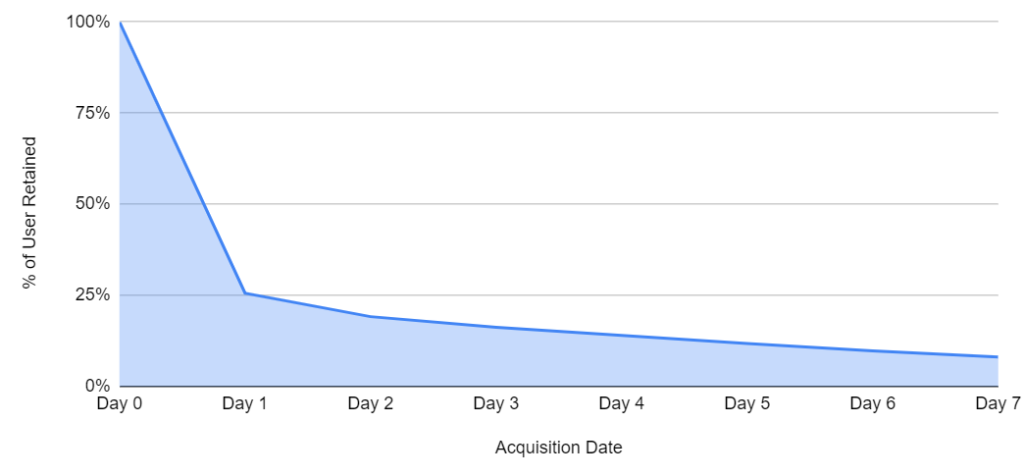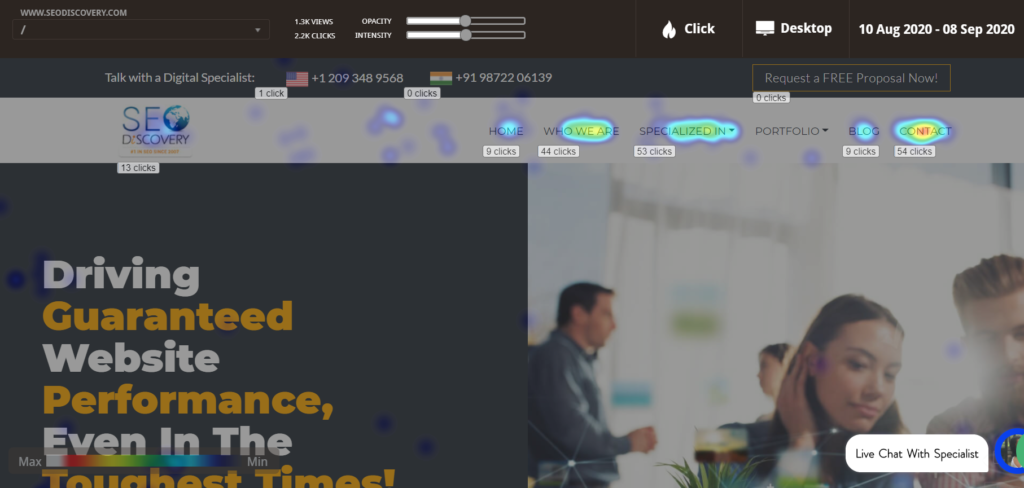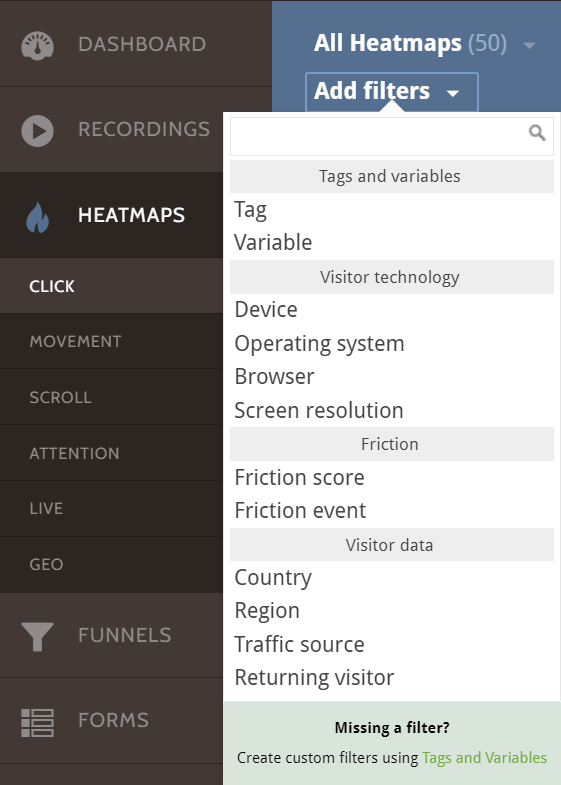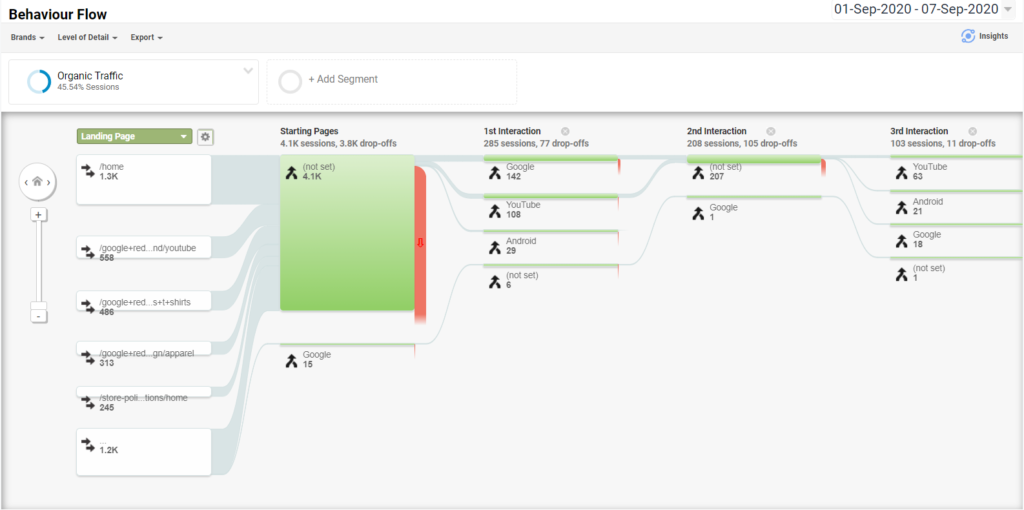Marketing Strategies
SEO Negotiation: How to Ace the Business Side of SEO — Best of Whiteboard Friday
Posted by BritneyMuller
SEO has become more important than ever, but it isn’t all meta tags and content. A huge part of the success you’ll see is tied up in the inevitable business negotiations. In this helpful Whiteboard Friday from August of 2018, our resident expert Britney Muller walks us through a bevy of smart tips and considerations that will strengthen your SEO negotiation skills, whether you’re a seasoned pro or a newbie to the practice.
Click on the whiteboard image above to open a high-resolution version in a new tab!
Video Transcription
Hey, Moz fans. Welcome to another edition of Whiteboard Friday. So today we are going over all things SEO negotiation, so starting to get into some of the business side of SEO. As most of you know, negotiation is all about leverage.
It’s what you have to offer and what the other side is looking to gain and leveraging that throughout the process. So something that you can go in and confidently talk about as SEOs is the fact that SEO has around 20X more opportunity than both mobile and desktop PPC combined.
This is a really, really big deal. It’s something that you can showcase. These are the stats to back it up. We will also link to the research to this down below. Good to kind of have that in your back pocket. Aside from this, you will obviously have your audit. So potential client, you’re looking to get this deal.
Get the most out of the SEO audit
☑ Highlight the opportunities, not the screw-ups
You’re going to do an audit, and something that I have always suggested is that instead of highlighting the things that the potential client is doing wrong, or screwed up, is to really highlight those opportunities. Start to get them excited about what it is that their site is capable of and that you could help them with. I think that sheds a really positive light and moves you in the right direction.
☑ Explain their competitive advantage
I think this is really interesting in many spaces where you can sort of say, “Okay, your competitors are here, and you’re currently here and this is why,”and to show them proof. That makes them feel as though you have a strong understanding of the landscape and can sort of help them get there.
☑ Emphasize quick wins
I almost didn’t put this in here because I think quick wins is sort of a sketchy term. Essentially, you really do want to showcase what it is you can do quickly, but you want to…
☑ Under-promise, over-deliver
You don’t want to lose trust or credibility with a potential client by overpromising something that you can’t deliver. Get off to the right start. Under-promise, over-deliver.
Smart negotiation tactics
☑ Do your research
Know everything you can about this clientPerhaps what deals they’ve done in the past, what agencies they’ve worked with. You can get all sorts of knowledge about that before going into negotiation that will really help you.
☑ Prioritize your terms
So all too often, people go into a negotiation thinking me, me, me, me, when really you also need to be thinking about, “Well, what am I willing to lose?What can I give up to reach a point that we can both agree on?” Really important to think about as you go in.
☑ Flinch!
This is a very old, funny negotiation tactic where when the other side counters, you flinch. You do this like flinch, and you go, “Oh, is that the best you can do?” It’s super silly. It might be used against you, in which case you can just say, “Nice flinch.” But it does tend to help you get better deals.
So take that with a grain of salt. But I look forward to your feedback down below. It’s so funny.
☑ Use the words “fair” and “comfortable”
The words “fair” and “comfortable” do really well in negotiations. These words are inarguable. You can’t argue with fair. “I want to do what is comfortable for us both. I want us both to reach terms that are fair.”
You want to use these terms to put the other side at ease and to also help bridge that gap where you can come out with a win-win situation.
☑ Never be the key decision maker
I see this all too often when people go off on their own, and instantly on their business cards and in their head and email they’re the CEO.
They are this. You don’t have to be that, and you sort of lose leverage when you are. When I owned my agency for six years, I enjoyed not being CEO. I liked having a board of directors that I could reach out to during a negotiation and not being the sole decision maker. Even if you feel that you are the sole decision maker, I know that there are people that care about you and that are looking out for your business that you could contact as sort of a business mentor, and you could use that in negotiation. You can use that to help you. Something to think about.
Tips for negotiation newbies
So for the newbies, a lot of you are probably like, “I can never go on my own. I can never do these things.” I’m from northern Minnesota. I have been super awkward about discussing money my whole life for any sort of business deal. If I could do it, I promise any one of you watching this can do it.
☑ Power pose!
I’m not kidding, promise. Some tips that I learned, when I had my agency, was to power pose before negotiations. So there’s a great TED talk on this that we can link to down below. I do this before most of my big speaking gigs, thanks to Mike Ramsey who told me to do this at SMX Advanced 3 years ago.
Go ahead and power pose. Feel good. Feel confident. Amp yourself up.
☑ Walk the walk
You’ve got to when it comes to some of these things and to just feel comfortable in that space.
☑ Good > perfect
Know that good is better than perfect. A lot of us are perfectionists, and we just have to execute good. Trying to be perfect will kill us all.
☑ Screw imposter syndrome
Many of the speakers that I go on different conference circuits with all struggle with this. It’s totally normal, but it’s good to acknowledge that it’s so silly. So to try to take that silly voice out of your head and start to feel good about the things that you are able to offer.
Take inspiration where you can find it
I highly suggest you check out Brian Tracy’s old-school negotiation podcasts. He has some old videos. They’re so good. But he talks about leverage all the time and has two really great examples that I love so much. One being jade merchants. So these jade merchants that would take out pieces of jade and they would watch people’s reactions piece by piece that they brought out.
So they knew what piece interested this person the most, and that would be the higher price. It was brilliant. Then the time constraints is he has an example of people doing business deals in China. When they landed, the Chinese would greet them and say, “Oh, can I see your return flight ticket? I just want to know when you’re leaving.”
They would not make a deal until that last second. The more you know about some of these leverage tactics, the more you can be aware of them if they were to be used against you or if you were to leverage something like that. Super interesting stuff.
Take the time to get to know their business
☑ Tie in ROI
Lastly, just really take the time to get to know someone’s business. It just shows that you care, and you’re able to prioritize what it is that you can deliver based on where they make the most money off of the products or services that they offer. That helps you tie in the ROI of the things that you can accomplish.
☑ Know the order of products/services that make them the most money
One real quick example was my previous company. We worked with plastic surgeons, and we really worked hard to understand that funnel of how people decide to get any sort of elective procedure. It came down to two things.
It was before and after photos and price. So we knew that we could optimize for those two things and do very well in their space. So showing that you care, going the extra mile, sort of tying all of these things together, I really hope this helps. I look forward to the feedback down below. I know this was a little bit different Whiteboard Friday, but I thought it would be a fun topic to cover.
So thank you so much for joining me on this edition of Whiteboard Friday. I will see you all soon. Bye.
Video transcription by Speechpad.com
Scoop up more SEO insights at MozCon Virtual this July
Don’t miss exclusive data, tips, workflows, and advice from Britney and our other fantastic speakers at this year’s MozCon Virtual! Chock full of the SEO industry’s top thought leadership, for the first time ever MozCon will be completely remote-friendly. It’s like 20+ of your favorite Whiteboard Fridays on vitamins and doubled in size, plus interactive Q&A, virtual networking, and full access to the video bundle:
Save my spot at MozCon Virtual!
Still not convinced? Moz VP Product, Rob Ousbey, is here to share five highly persuasive reasons to attend!
Sign up for The Moz Top 10, a semimonthly mailer updating you on the top ten hottest pieces of SEO news, tips, and rad links uncovered by the Moz team. Think of it as your exclusive digest of stuff you don’t have time to hunt down but want to read!
Marketing Strategies
OpsStars Virtual Event Preview: Q&A With Rachael McBrearty, Chief Customer Office At LeanData
/
Now in its fifth year, OpsStars has grown into a must-attend event operations and revenue-focused executives turn to for targeted education and networking./
Demand Gen Report caught up with Rachael McBrearty, one of the LeanData executives shaping the agenda for the event, to get a preview of what attendees can expect during the virtual event on October 20-21—including presentations from high-growth B2B brands Zoom and Docusign.
Demand Gen Report: RevOps was the hot topic at OpsStars last year. How does RevOps fit into LeanData’s vision today?
McBrearty: Last year at OpsStars, we were really proud to spotlight Revenue Operations as an important new operating model for growth in B2B – and the role operations will play in enabling it. Much of our agenda centered around “The Journey to RevOps” as the event’s topline theme.
Fast forward nearly one year, and we’re seeing even greater momentum behind the RevOps movement. The COVID-19 pandemic drove a greater imperative for sales and marketing leaders to improve go-to-market alignment to support growth in a challenging economy. We’ve also seen RevOps expand further into the enterprise. Management consulting firms like Boston Consulting Group have even launched cross-practice initiatives around RevOps to support some of the world’s biggest companies in moving to this model.
Working with our customers, we spotted the RevOps trend early on – even before it had a name! From this vantage point, we strongly believe RevOps will become the dominant operating model for driving predictable, efficient revenue growth in B2B.
DGR: “The Rise of Ops” – what’s the meaning behind your OpsStars 2020 theme?
McBrearty: This year we wanted to shine a spotlight on operations professionals themselves – and the increasingly strategic role they play in the revenue process.
Ops is really the backbone of go-to-market strategy and execution – and ultimately revenue growth.
Even more so in recent years, as this role supports increasingly sophisticated and complex sales and marketing strategies and programs. Yet Ops still operates largely behind the scenes.
We see this changing, however, as Ops play a more visible role and increasingly takes a seat at the table. This year’s OpsStars will recognize “the rise of ops” and their role as superheroes of the modern revenue engine.
DGR: Can you tell our audience more about the “virtual” experience planned for OpsStars attendees this year?
McBrearty: Virtual events are new for everyone this year – we’re all learning as we go! However, we put a great deal of thought into the best way to structure OpsStars in this new format.
Networking is one of the key reasons people attend OpsStars, so we wanted our attendees to come together as much as possible in a virtual setting. For example, although the event is held across two days, we’ve limited each day to four hours to make it easier for people to carve out time to attend and participate without distraction. We also have a number of workshops to bring people together, and we’ll set up a Slack channel to encourage conversations around key topics amongst attendees, presenters and sponsors.
Now in its fifth year, OpsStars has always been an event “by Ops, for Ops.” Through a virtual platform, we aim to continue our tradition of bringing together sales, marketing, customer and revenue operations leaders to share best practices, career development and networking.
DGR: Lead management seems prominent on the OpsStars 2020 agenda. Has that expanded from last year?
McBrearty: Yes, we’re so fortunate to have the ops teams from Zoom and DocuSign giving attendees a peek under the covers at how their teams successfully managed unprecedented spikes in demand nearly overnight due to the COVID-19 pandemic. Both for Zoom and DocuSign, their ability to scale lead management to keep up with this level of demand was critical to powering their rapid response to incoming requests.
Nearly all companies were impacted by COVID, however, and automated lead management is essential to helping them pivot to go-to-market in days, or even hours, as business conditions change. This level of agility has become critical for business continuity and execution in these uncertain times.
DGR: Lead-to-Account Matching & Routing recently became an “official” martech category. This is great validation for LeanData. What do you think it says about the future growth of the category.
McBrearty: Yes, this was a major milestone for our company! TOPO (now part of Gartner) released the first in-depth Market Guide for Lead-to-Account Matching and Routing in August. Up to now, this technology has been somewhat of a “best-kept secret,” with B2B adoption estimated at 48 percent. However, TOPO says it is now one of the most critical applications in the tech stacks of modern sales and marketing organizations. We were gratified to see TOPO named LeanData the dominant vendor in this space.
This is no fledging tech category – it’s been in the works for the better part of a decade. But TOPO’s report is a significant validation of what we and our customers have worked hard to create. We believe formalizing Lead-to-Account Matching and Routing as an “official” tech category, with de facto standards and best practices, will create more awareness around the technology and make it easier for more companies to adopt.
Marketing Strategies
How to adapt your SEO strategy to navigate through the pandemic
30-second summary:
- When you’re starting with your adapted SEO strategy, it’s important to acknowledge the changes in your working environment. All remote teams need to evaluate their communication needs to improve their efficiency in the ‘new normal’.
- You don’t want more unfortunate surprises during turbulent times. Meaningful reporting can connect content, SEO, marketing, and web activities to give everyone the visibility to plan for future projects.
- The idea is to reduce unnecessary meetings to empower your team to work on their own. Start by communicating your SEO strategy and what everyone will work on.
- One of the first changes should be to look at your website and your content to make it more relevant. Explain how COVID-19 is affecting your businesses and how you’re still supporting your clients.
Right after the initial shock of the pandemic, many businesses are reassessing their strategies to remain successful. Organic search can help you set up a successful SEO strategy to support your business’s recovery.
Conductor has written a post-pandemic SEO strategy playbook with practical tips to explore business opportunities through organic search.
Content created in partnership with Conductor.
The power of SEO during COVID-19
As we are all spending more time at home, Google searches are increasing. There is an estimate of 20 billion searches every day.
This is a great opportunity for businesses to capitalize search traffic to increase sales.
What’s more, SEO is a low-cost and very effective method to increase your brand awareness before you increase your ad spend.
What’s important though is to understand how COVID-19 has affected SEO and how to adjust your strategy.
Defining your remote communication style
When you’re starting with your adapted SEO strategy, it’s important to acknowledge the changes in your working environment. All remote teams need to evaluate their communication needs to improve their efficiency in the ‘new normal’.
Start with internal communications and the tools that will get your team more productive. Foster an environment of transparency and accountability and document the team’s workflows.
Improved visibility can help you prioritize the crucial tasks that you need to focus on. Moreover, the more transparent you are, the easier it becomes to collaborate with different departments towards shared objectives.
Conductor recommends the use of surveys to gather feedback about your website, your marketing campaign or even for content ideas. It’s a great way to plan for short and long-term projects while getting perspective from various teams.
All the findings can help you set up your communication style, how you’re interacting as a team and how you can be more productive.
Create meaningful reporting
You don’t want more unfortunate surprises during turbulent times. Meaningful reporting can connect content, SEO, marketing, and web activities to give everyone the visibility to plan for future projects.
It’s not enough to create reports that nobody is interested in reading. It’s time to build digestible reports that your stakeholders would appreciate.
There are many things that you can measure to support your SEO strategy. You can also work alongside different teams to discover interesting insights that can lead to multiple wins.
For example, working with the sales team can help you spot opportunities to appeal to potential customers. Search insights can help you create the right content while providing valuable data to your salespeople.
Keep in mind, your executives should include what your stakeholders want to see. It’s important to align your tactics with the key factors that will affect your business success, such as traffic, revenue, retention, etc.
Looking for creative reporting? The Conductor team is recommending the use of a five-minute video that can replace a time-consuming report.
Use it to describe your team’s performance and what you’re planning to do next.
Train your team to be self-sufficient
The best way to maintain your productivity in a remote environment is to train your team to be self-efficient. If there are many similar questions from your team, how about creating a report answering these questions?
The idea is to reduce unnecessary meetings to empower your team to work on their own. Start by communicating your SEO strategy and what everyone will work on.
Encourage your team to share their ideas and work on an action plan that will get the most of every team member.
Identify high priority changes
This is the best time to focus on what matters. Work with your team and your key stakeholders to define your priorities and how to spend more time on them.
It’s important to communicate all the changes with your customers to keep them up-to-date with what’s happening.
Start by answering the question:
What do customers want to know about my business and any recent changes related to COVID-19?
The answer can help you work on your internal and external communication to give everyone more clarity on what’s coming up.
One of the first changes should be to look at your website and your content to make it more relevant. Explain how COVID-19 is affecting your businesses and how you’re still supporting your clients.
Look at your current SEO strategy and adjust the keywords and content plan, if needed.
Review your online profiles and business listing to keep all relevant details up-to-date.
For example, ecommerce companies should update all the information around delivery details, product availability and potential offers.
If you are changing your working hours or your business focus, make sure you communicate the changes with your customers.
There’s no over-communication during a crisis.
Looking at the bigger picture
It’s not just about surviving the current situation. Your business should also look at the bigger picture of what’s coming up next.
It’s the best opportunity now for planning, reflection, and collaboration.
If you’re using Conductor, look at your workflows to understand the impact of the crisis in your visibility. Adjust your plans accordingly, if needed.
Stay on top of change with regular monitoring and use your SEO strategy to maintain long-term success for your business.
Ready to explore practical tips to improve your SEO strategy post-pandemic? Download Conductor’s SEO strategy playbook for additional ideas and templates.
The post How to adapt your SEO strategy to navigate through the pandemic appeared first on ClickZ.
Marketing Strategies
Why behavior analysis is important online business
30-second summary:
- A typical consumer now owns an average of 3.6 devices which means a person’s journey may start from a laptop and end on a mobile or a tablet.
- In the ecommerce business, the cart abandonment rate is the thing that haunts most of the business owners.
- Developing analytical skills can help you better manage these obstacles.
- MD of SEO Discovery shares a guide to help you understand Cohort Analysis and Behavior Analysis to eliminate roadblocks and improve engagement.
In today’s digital age, the customer journey is getting complex day by day and if you are doing online business then it’s vital to understand your customer journey. A typical consumer now owns an average of 3.6 devices which means a person’s journey may start from a laptop and end on a mobile or a tablet.
In the ecommerce business, the cart abandonment rate is the thing that haunts most of the business owners. According to Statista, 88.05 percent of online shopping orders were abandoned in March 2020 worldwide, which means over 88% of people added selected products into the cart and left without buying for various reasons. This is a massive business opportunity loss for ecommerce players.
Developing analytical skills can help you better manage these obstacles. Without adequate knowledge of analytics, your marketing won’t work because you won’t know what worked and what didn’t work. All the marketing suits come with analytics tools to help perceive the behavior, engagement metrics, and demographics of the visitors coming to a website. The most common web analytics tools are Google Analytics, Adobe Analytics, Kiss Metrics, and Mixpanel. They generally come with the following features and capabilities:
- Real-time analytics
- Mobile analytics
- Attribution modeling
- Segmentation
- Ecommerce tracking
- Funnel analysis
- Cohort analysis
- Cross-device tracking
- In-page analytics (Session recording, click tracking, heatmaps)
- Goal conversion tracking
- Event tracking
- A/B testing
Every feature has its own data sets which can be compared to help you make informed decisions. Today we are going to understand Cohort Analysis and Behavior Analysis to eliminate roadblocks and improve engagement.
What is a Cohort Analysis and why is it important?
Cohort analysis is a subset of users grouped by shared characteristics. It simply allows you to compare the behavior and metrics of different cohorts over time.
Cohort Analysis Example - Finding Engagement Drop
Let’s suppose you have an online food ordering website/app and using acquisition date (when users started their first sessions) cohorts you can find out when in the customer lifecycle your users tend to drop off.
The best way for visualizing this data is to chart out the retention curve, portraying retention over time.

This retention curve clearly reflects the most important insight – around 75% of the users stop using the website after the first day. We can see a downfall in the engagement. Hence, it’s evident to improve the overall experience and abet customers through daily offers/coupons to boosting retention.
Cohort Analysis Comparison - Organic vs Direct
The below cohort analysis indicates that organic traffic has a better retention rate than direct.

Visitor behavior analysis and its importance
It’s a process of tracking user behavior on a website and there are some great tools in the market that give accurate information. Tools like Hotjar, MouseFlow, Crazy Egg record visitor sessions to see how visitors are navigating on the website. They also offer click tracking and heatmaps to analyze the most engaging and ignored (skipped) elements on a page.

If you look at the above heatmap, you would notice that no one bothered to click on “PORTFOLIO” in the top menu, which means people aren’t interested in see the portfolio. Maybe we have to replace it with something more interesting (like Case Studies, Achievements, and more) which grabs a visitor’s attention. These kinds of insights help you add/remove elements to improve page engagement.
Using filters, you can further segment your audience to dig deep and pull out actionable insights, see those filter below:

In Google Analytics, behavior flow gives you a visual presentation of how people are navigating on your website. You can apply segments to get a deeper view of their behavior and it also enables you to apply different dimensions on top of these segments to get actionable insights.

The power of these analytical tools lies in the fact that it allows you to view which customers leave and what’s making them leave your website/app – so that you can fix it. You can also hire a professional digital marketing agency that can help you find these hurdles and remove them to enhance your overall engagement.
Mandeep Singh is the MD of SEO Discovery. He’s mission is to provide affordable digital marketing services to startups and SMEs. He’s an official member of Forbes Agency Council. You can find him on LinkedIn.
The post Why behavior analysis is important online business appeared first on Search Engine Watch.
-
 Business2 months ago
Business2 months agoBernice King, Ava DuVernay reflect on the legacy of John Lewis
-
World News2 months ago
Heavy rain threatens flood-weary Japan, Korean Peninsula
-
 Technology2 months ago
Technology2 months agoEverything New On Netflix This Weekend: July 25, 2020
-
Finance4 months ago
Will Equal Weighted Index Funds Outperform Their Benchmark Indexes?
-
Marketing Strategies9 months ago
Top 20 Workers’ Compensation Law Blogs & Websites To Follow in 2020
-
 World News8 months ago
World News8 months agoThe West Blames the Wuhan Coronavirus on China’s Love of Eating Wild Animals. The Truth Is More Complex
-
Economy11 months ago
Newsletter: Jobs, Consumers and Wages
-
 Finance10 months ago
Finance10 months ago$95 Grocery Budget + Weekly Menu Plan for 8

